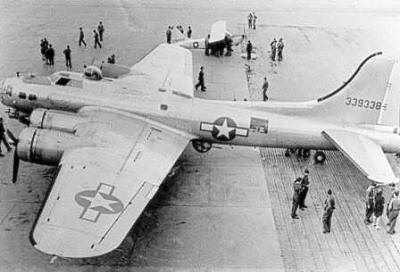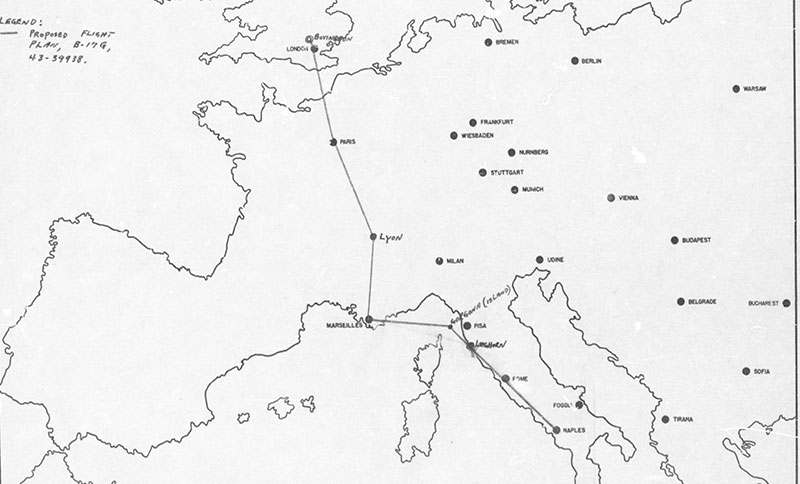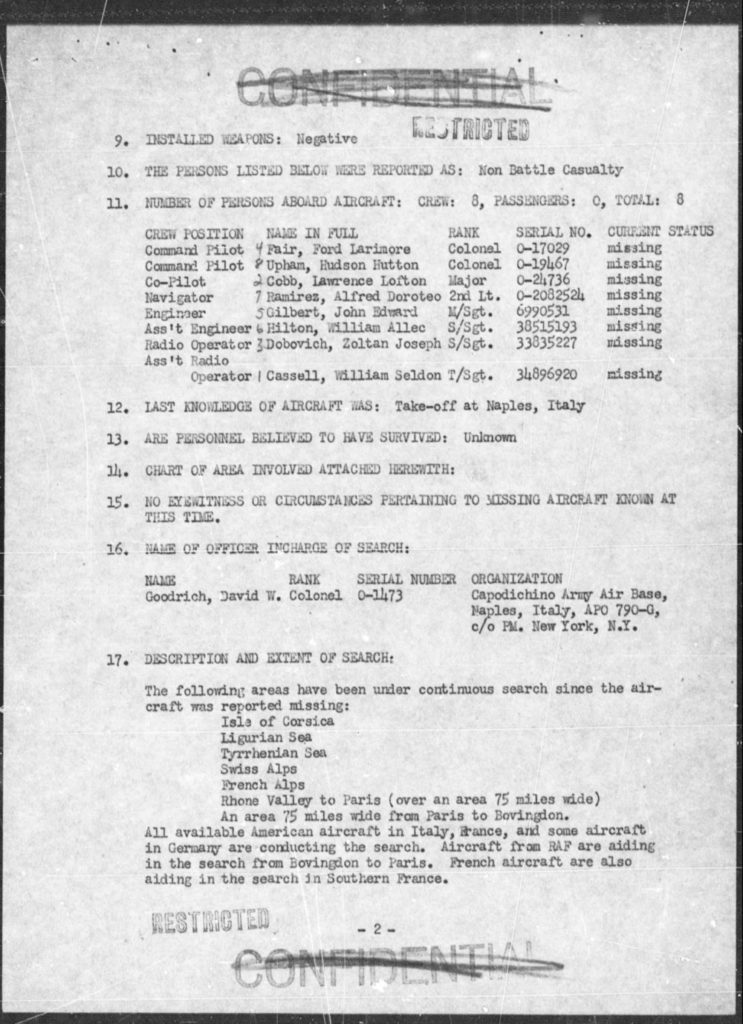L'incidente


A USAAF B-17G assigned to the US Army European Air Transport Service (EATS) took off with a crew of 4 officers and 4 NCOs from Capodichino Air Base (Naples, Italy) at around 2am on November 1st 1946, destination Bovingdon, near London, England.
It never arrived.
Difficult weather conditions with severe thunderstorms had been forecast along the route, but the aircraft captain, Col. Hudson H. Upham, authorized himself for departure. One routine radio message was transmitted a few minutes after take-off, following which no other messages were received.
When it was realized that the aircraft was overdue, and had not landed at either Bovingdon, England or Orly, Paris (its alternative destination), a Missing Aircraft telegram (Ref A) was issued. A series of telegrams were then dispatched to stations along the route requesting news of its whereabouts, but all replies advised “no news”.
HQ EATS then issued a series of “Search Instigation” messages to Capodichino, Istres and Orly, advising the search areas to be covered (Ref B).
All searches were fruitless. The plane had apparently disappeared without a trace, and the combined search efforts of a large number of American, French, British and Swiss planes revealed no sign of its whereabouts.
On November 6th 1946, after having received an initial report (Ref D) from Capt. Steigner, the Met Officer at Capodichino, Brigadier General Lucas Beau of EATS wrote a letter (Ref C) to Major General Edwards, Commanding General of the US Air Forces in Europe. While expressing his feelings that the flight crew of the B-17 were very experienced, he also confided his inability to understand why they should have departed in such adverse weather conditions.

On November 7th 1946, a Missing Air Crew Report was issued (Ref E). This listed the eight-man crew as non-battle casualties:
Colonel Ford L. Fair (Command Pilot)
Colonel Hudson H. Upham (Command Pilot)
Major Lawrence L. Cobb (Co-pilot)
2nd Lt. Alfred D. Ramirez (Navigator)
M/Sgt John E. Gilbert (Engineer)
S/Sgt William A. Hilton (Asst. Engineer)
S/Sgt Zoltan J. Dobovich (Radio Operator)
T/Sgt William S. Cassell (Asst. Radio Operator)
On November 18th 1946, after almost 3 weeks of continuous search without finding any trace of the plane, General Beau authorized that the search should be abandoned (Ref F). The statement concerning emphasis on adherence to a Flight Plan filed prior to departure for other aircraft suggests that the lost B-17 did not, in fact, adhere to its flight plan (Ref G).
On November 30th, Capt. Steigner, the Capodichino Met Officer provided a more detailed description of what occurred during the course of the weather briefing to Fair, Upham and Cobb (Ref H).
On December 2nd, Brigadier General Lucas Beau of EATS formally notified the Chief of Flying Safety Services at Langley Field, Virginia and General Edwards, with the essential details of the search plus copies of the official documentation regarding the “Missing Aircraft Report” currently in progress. (Ref I).
Reference files:
- Ref A – Transcription of 2 Nov Accident Report Telegram
- Ref B – Search Investigation Telegrams
- Ref C – Letter from General Beau to General Edwards
- Ref D – Statement by Capodichino concerning the flight
- Ref E – Missing Aircraft Report
- Ref F – Abandon search instruction
- Ref G – Flight Plan route
- Ref H – Weather conditions at the time of the flight – deposition of nov 30 1946
- Ref I – Letter from General Beau to General Edwards

